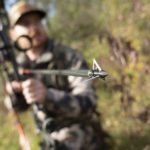Two trends characterize today’s release industry.
First, with more and more bowhunters going to string loops, there are new releases designed specifically for this shooting style.

Second, 3-D shooting techniques have spilled over into hunting with the renewed interest in thumb-triggered releases.
I’ll look at both of these product categories as well as several others as I explore each release style with the goal of helping you choose a more accurate system.
STRING LOOP RELEASES
String loops have grown very popular among target and 3-D shooters during the past several years because they promote good arrow flight, positive peep sight alignment and long serving life.
However, in the past two years they’ve also begun appearing on the strings of bowhunters. Not surprisingly, specialized releases were quick to follow.
These fine releases are designed with a fully exposed peg or hook that easily and quickly snags the string loop as you prepare to draw.
When you squeeze the trigger the hook rolls forward and smoothly drops the string.
Several of these styles also have a very short distance from the trigger to the hook so that you can maintain your nomal, full draw length when using a string loop.
CALIPER RELEASES
Possibly the most popular hunting release ever, the caliper has a no nonsense design. With most models you have to close the jaws by moving the trigger forward giving you immediate feedback that everything is ready for the draw.
You can find hand-held caliper releases (conchos and hand-grips), but most come attached to a wrist-strap.
Durability and reliability are the caliper’s greatest strengths. I’ve gone through several release styles through the years, and now hunt almost entirely with these fail-safe devices.
Though some of the thumb-trigger target releases adapted for hunting are machined more precisely with a crisper trigger, the caliper is still precise enough for all but the longest range hunting situations.
In eight years of shooting them, I’ve never had a caliper release misfire, nor have I ever had a problem getting them hooked to the string when a nice buck came by.
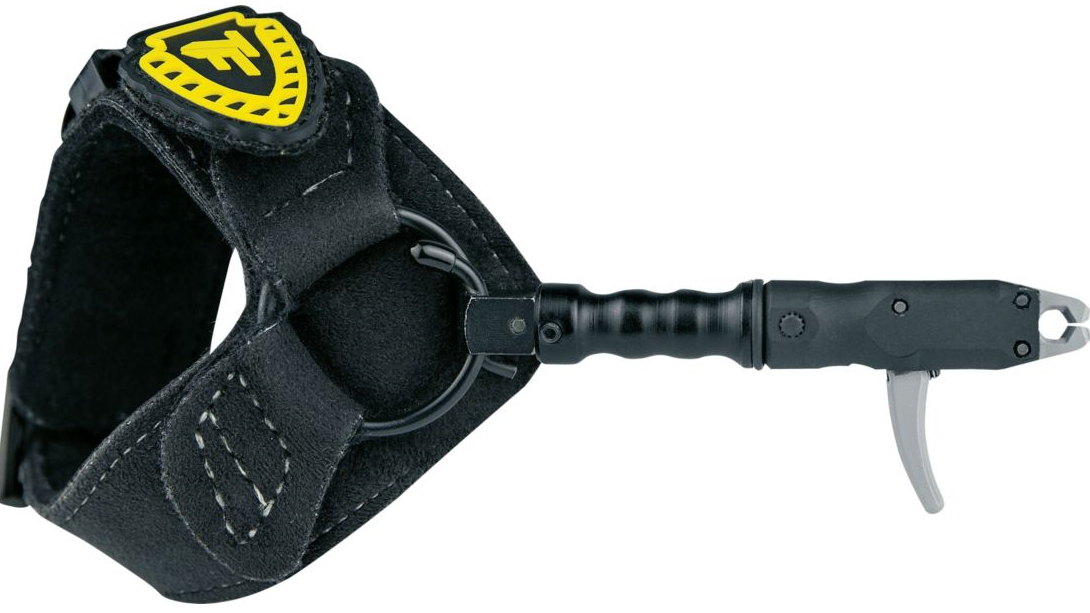
The only mark against wrist strap releases is their tendency to be in the way whenever you try to use your hand for something other than shooting.
In some cases you can turn the release around to the back of your hand if it’s loose enough. And there are a few that fold out of the way when not in use.
THUMB-TRIGGER RELEASES
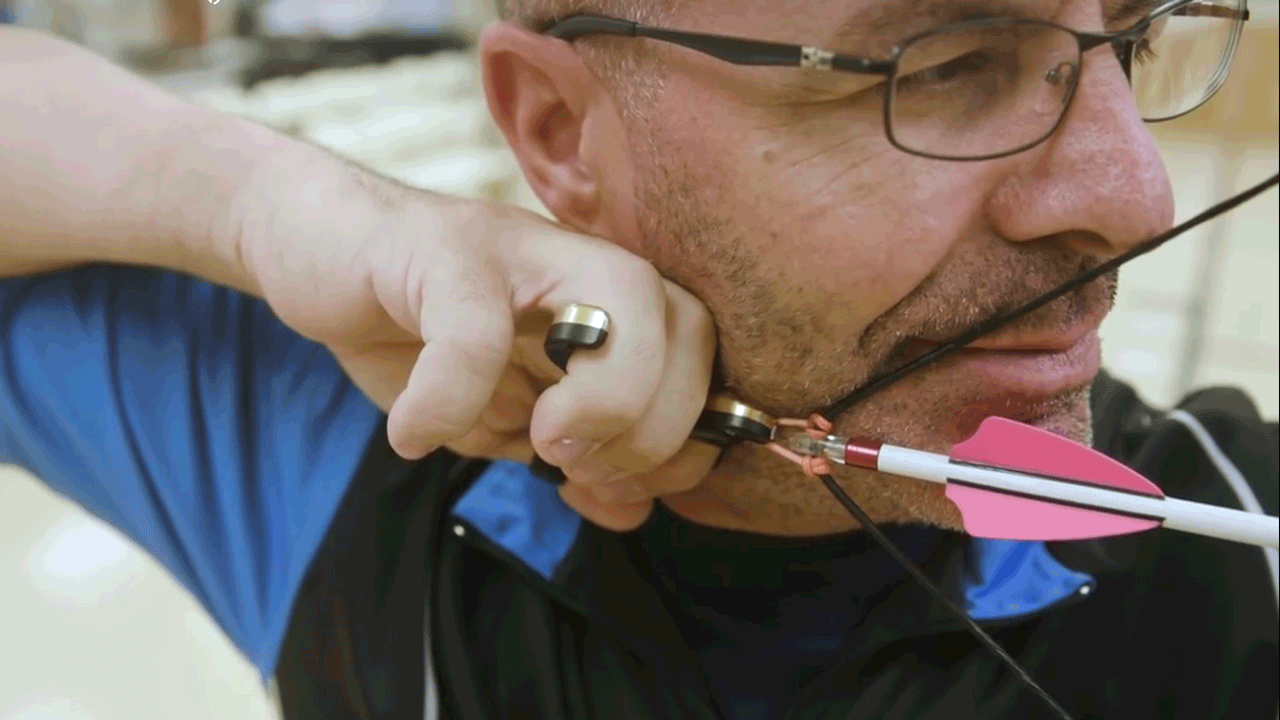
Stan Potts, the well-known whitetail hunter from Illinois, shoots only three-finger releases because he loves being able to clip the release on the string below his arrow and then leave it hanging until a nice buck walks past.
Stan is able to keep his hands free while at the same time avoiding the need to load the release onto the string during the moment of truth. For him, it’s just grab ‘n go.
Like Stan, I’ve had bucks catch me flat-footed permitting only seconds of warning before walking right through my shooting lanes.
Precious seconds saved when loading the release can add up big during the moment of truth.
You may find that it’s harder to shoot heavy draw weight hunting bows with the thumb-trigger releases than with wrist-strap models because the entire draw weight must be held by the fingers.
However, like everything else, finger strength increases with practice. Only experimentation will determine whether thumb-trigger models are right for you.
If you choose a thumb-trigger release make sure to keep an extra one handy.
Take it from me – a guy who’s lost his share of release aids – there’s nothing more frustrating than reaching into you pocket for your release and finding it empty.
I also hate to climb down from a stand to search for a dropped release during prime movement times.
OTHER RELEASE STYLES
Tumbler style, pivoting jaw releases are also used extensively for hunting. They are just as practical as calipers, the only difference being that they have a different trigger mechanism.
One of the most popular examples of this style is the Winn Free Flight. This simple and rugged design is attached to a strap-on glove with a palm bar for added power when drawing heavy hunting weight bows.
Typical of this release style, the lower jaw which pivots to create a 3/8 inch string opening) snaps shut automatically when the release is pushed onto the string.
Under completely still conditions, you should muffle this sound by pushing the bowstring against your jacket or leg as you load the release. Winn also makes the C-12, a relax trigger model that fires when you let the trigger move forward.
In the same way that 3-D competition has inspired innovation in hunting bows, release aids are also beginning to show the target influence.
Today’s hunting releases are essentially target releases with a few less frills. Precision, hair-triggers, cocking hammers and models designed for string loops have already made their mark and will continue to grow in popularity.
Tweak Your Release for Better Accuracy
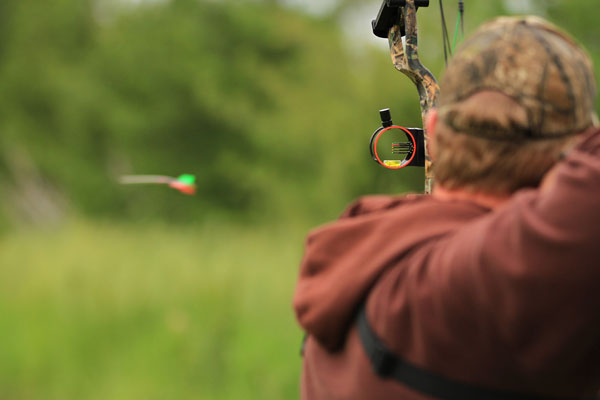
The length of a wrist-strap release has a major bearing on how well you’ll be able to shoot it. If you have to reach for the trigger you’ll never be 100% comfortable at full draw and tension will creep into your shooting.
Whenever possible test a release before buying it, or buy one that permits the length to be adjusted.
The triggering mechanism of most releases relies upon a friction sear. The higher the draw weight (specifically the holding weight) the stiffer the trigger.
In most cases, you can customize your release to the bow you shoot by simply turning an allen wrench to increase or decrease the amount of trigger travel.
Always start out with the release set too stiff and slowly turn the adjustment screw until the perfect tension is achieved.
When comparing the trigger tension of a mechanical release to that of a gun, strive for a feel that is similar to what you get with a shotgun. Rifle-fine trigger tensions are not practical with the rough mechanisms found in most release aids.
A growing number of exceptions exist, however, as more companies are focusing on precision machined trigger mechanisms.
For best control under hunting conditions, set your trigger for hunting with enough tension that you can feel it even with a gloved finger.
However, overly hard-pulling triggers (greater than eight pounds) should also be avoided as they can promote the bad habit of punching the trigger.
Off-Season Training to Beat Target Panic
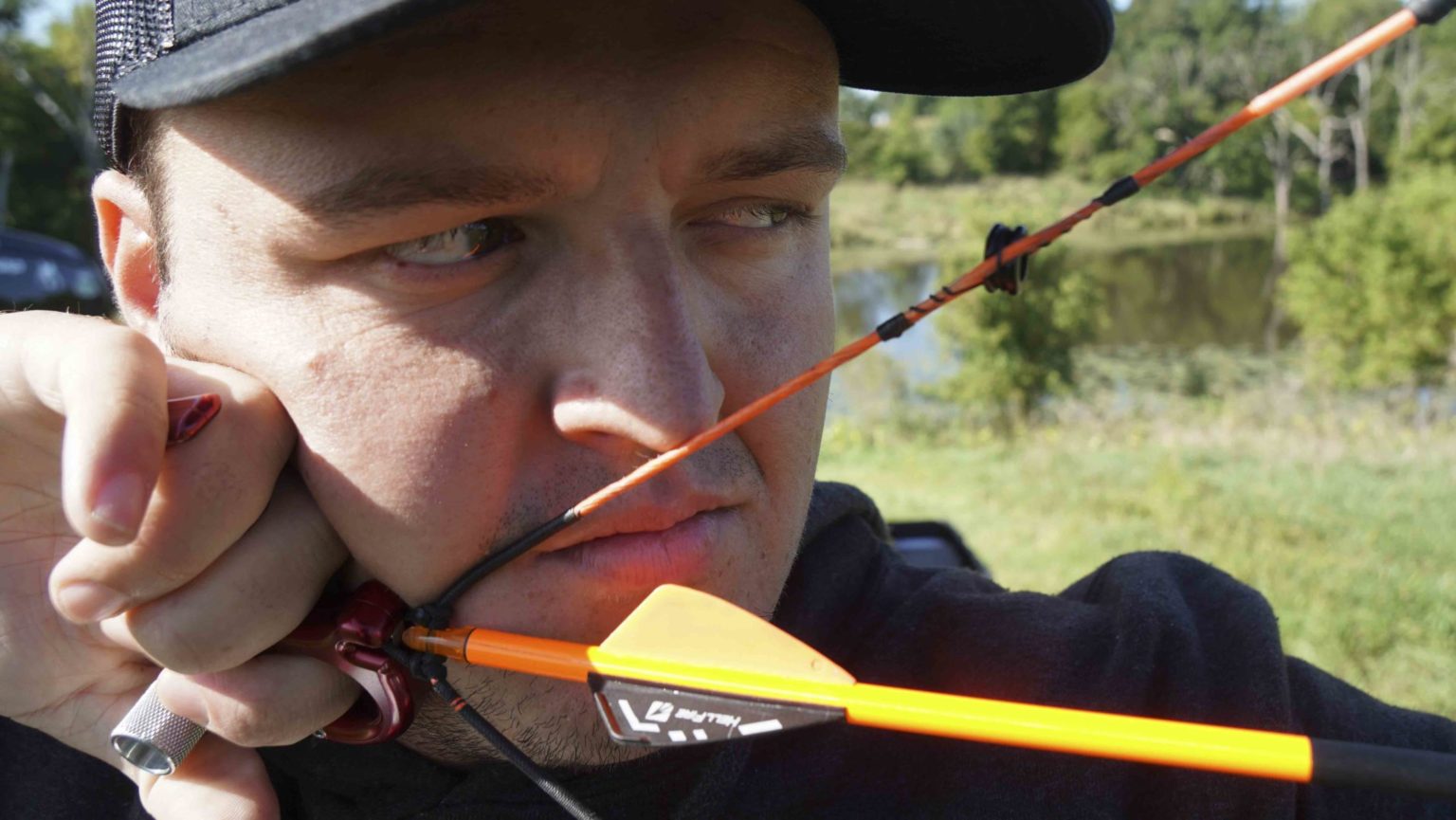
Target panic is archery’s version of the plague. You die a slow painful death from it. But unlike the plague, target panic afflicts nearly everyone at some point in their shooting lifetime. Target panic is the inability to hold the pin on the intended target while aiming.
Did you ever wish you could aim solidly while squeezing the release’s trigger instead of punching when the pin crosses the target? You can if reprogram your nervous system. It’ll take a little time, some faith and a bit of courage, but it can be done in as little as two to three weeks.
Pick up a back-tension release such as the Stanislawski (503) 777-1228, Carter Solution or Revenger 4 and T.R.U. Ball’s Pro TNT Hinge Fire or Spike (804) 929-2800.
Even if you never use these releases for anything else they’re exceptional training aids that will literally make you a better shooter in a matter of days.
Accuracy with my normal caliper release really improved, especially at longer ranges, after I started practicing with a back tension release. After only a few sessions as a refresher, I can hold the pin steady as I squeezed off shots smoothly.
I no longer have to fight my nerves while trying to hold my pin in one place. Even if you believe you’re already a good shot, your accuracy will improve in leaps and bounds if you work with one of these releases during the off-season.
Setting Up an Index-Triggered Release
Length: It’s possible that you’ve never considered the length of your release aid. By shortening the distance from the wrist strap to the trigger you can greatly improve your ability to make a good shot.
Rather than using the first articulation of your index finger to pull the trigger – from the first joint to the tip – use the second articulation. This puts the trigger on the first joint or the pad of flesh between the second joint and the first joint.
To do this you merely have to shorten your release aid and extend your finger a little farther forward when reaching for the trigger.
This simple change may be one of the best-kept “secrets” in archery – or at least it is one of the most overlooked fundamentals.
Length: It’s possible that you’ve never considered the length of your release aid. By shortening the distance from the wrist strap to the trigger you can greatly improve your ability to make a good shot.
Rather than using the first articulation of your index finger to pull the trigger – from the first joint to the tip – use the second articulation.
This puts the trigger on the first joint or the pad of flesh between the second joint and the first joint. To do this you merely have to shorten your release aid and extend your finger a little farther forward when reaching for the trigger.
This simple change may be one of the best-kept “secrets” in archery – or at least it is one of the most overlooked fundamentals.
This setup works better because the second joint isn’t nearly as sensitive to trigger tension as the first so it doesn’t give you enough feedback to anticipate the shot with the same degree of accuracy as you can when triggering with your fingertip.
Plus the second articulation is much less mobile. This means that once you start squeezing the trigger you are much more likely to achieve the kind of consistent pull that produces a surprise release.
Most release aids are adjustable for length in one way or another. Some have a cord, others have a threaded stem covered by a rubber tube while still others have a screw or bolt that can be removed to change length.
Shorten the release until the trigger falls right across the second articulation of your index finger when you hold the bow at full draw. This will feel very foreign at first, but trust me, it is correct.
Also, you will likely have to get used to a different technique for loading the release on the string since it will be farther back in your hand.
Now that you’ve got the release set up correctly, there are three ways you can make the release fire; one is bad, one is better and one is best.
First, the bad: pull the trigger abruptly when the pin crosses or momentarily stops on the spot you are trying to hit. This is likely the method used by 90% of the release shooters in the world, and is probably the number one reason people drop out of archery.
In trying to time the shot you will fight target panic your entire lifetime. It is that simple.
The act of trying to consciously command the trigger eventually results in a nervous condition that is about as much fun as paying taxes.
You may be able to get away with it to a certain degree when you are young, and your nerves rock steady, but as you get a little older you will find it increasingly difficult. Eventually, shooting a bow starts to feel more like torture than pleasure.
The second method for firing an index-triggered release is to squeeze the trigger using just the movement of your finger.
For reasons already mentioned, this almost never works if you are using the first articulation of the index finger, but with the trigger crossing the second articulation you at least have a fighting chance of producing a surprise release this way. There is still a better method, however.
Finally, the best action is to hook your finger around the trigger solidly and then use the tightening of your back muscles, rather than a conscious movement of the finger, to make the release fire.
It should feel like you are trying to squeeze your shoulder blades together. This virtually assures you of getting the kind of surprise release that forever defeats target panic and leads to a lifetime of archery enjoyment.
There is only one release aid setting that still remains before this technique will work well for you: the proper trigger tension.
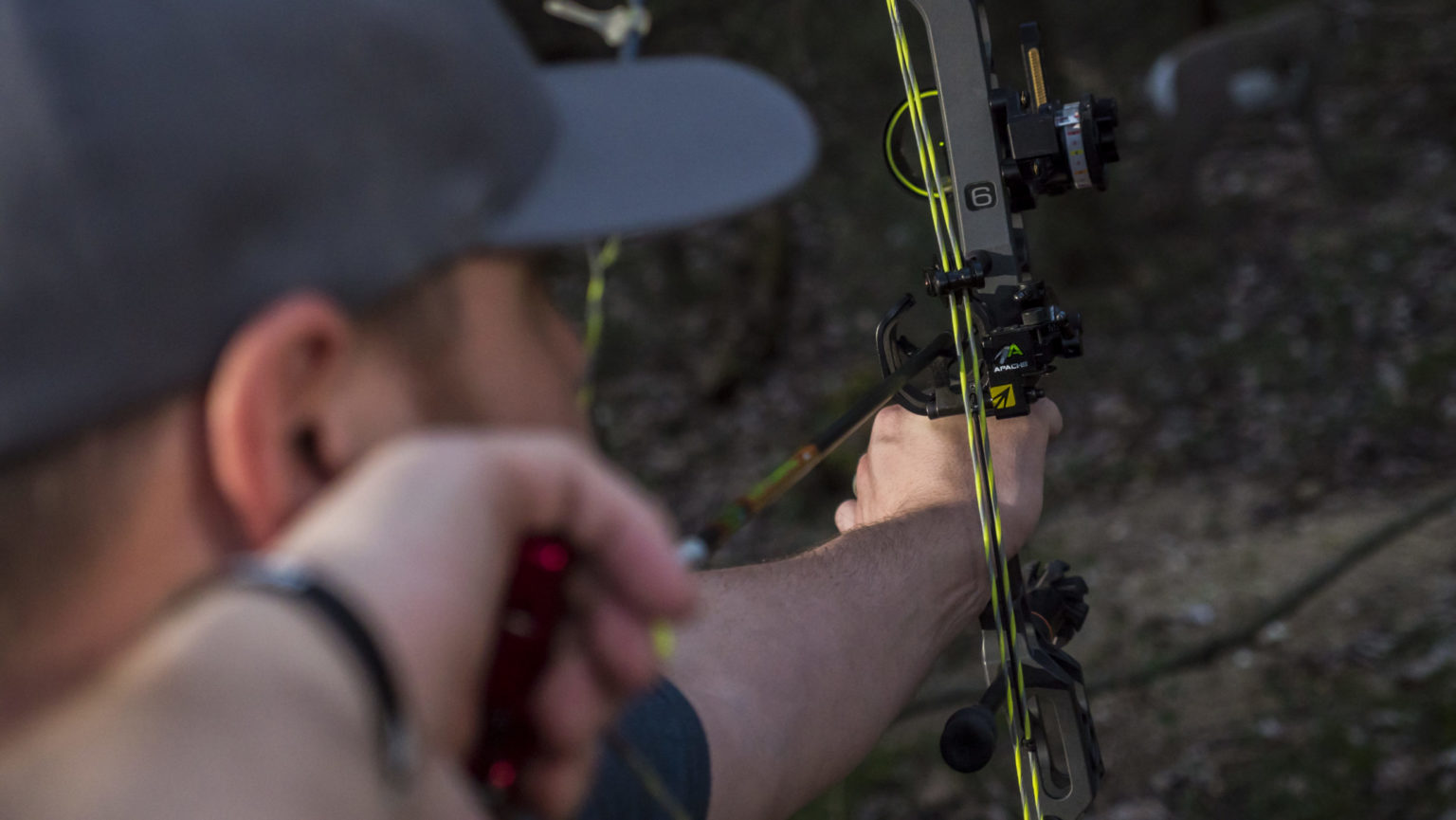
Trigger tension: Trigger tension or trigger pull is a somewhat personal thing, but for most archers a fairly light trigger seems to work better than a fairly heavy trigger.
A light trigger permits the bow to fire within the first few seconds of starting the shot sequence, and that is important. Beyond the obvious reasons of needing to get a shot off fairly quickly when hunting, most archers become impatient after about three or four seconds of aiming and the longer they hold the more mentally distraught they become.
They start to become unsteady too. I face the same problems. If the shot takes too long to fire, it becomes increasingly tempting to simply pull the trigger with a movement of the finger and be done with it.
This defeats the whole process and soon leads the archer to doubt this new method of shooting.
This is where it becomes personal. To assure that the shot takes place during the first three or four seconds of the start of the back-tension squeeze you will have to play with your trigger tension.
You don’t want a hair trigger for hunting because with gloves on you may accidentally trigger the shot before you even get settled and start the squeeze. With a little experimenting you’ll find the perfect tension for you.



